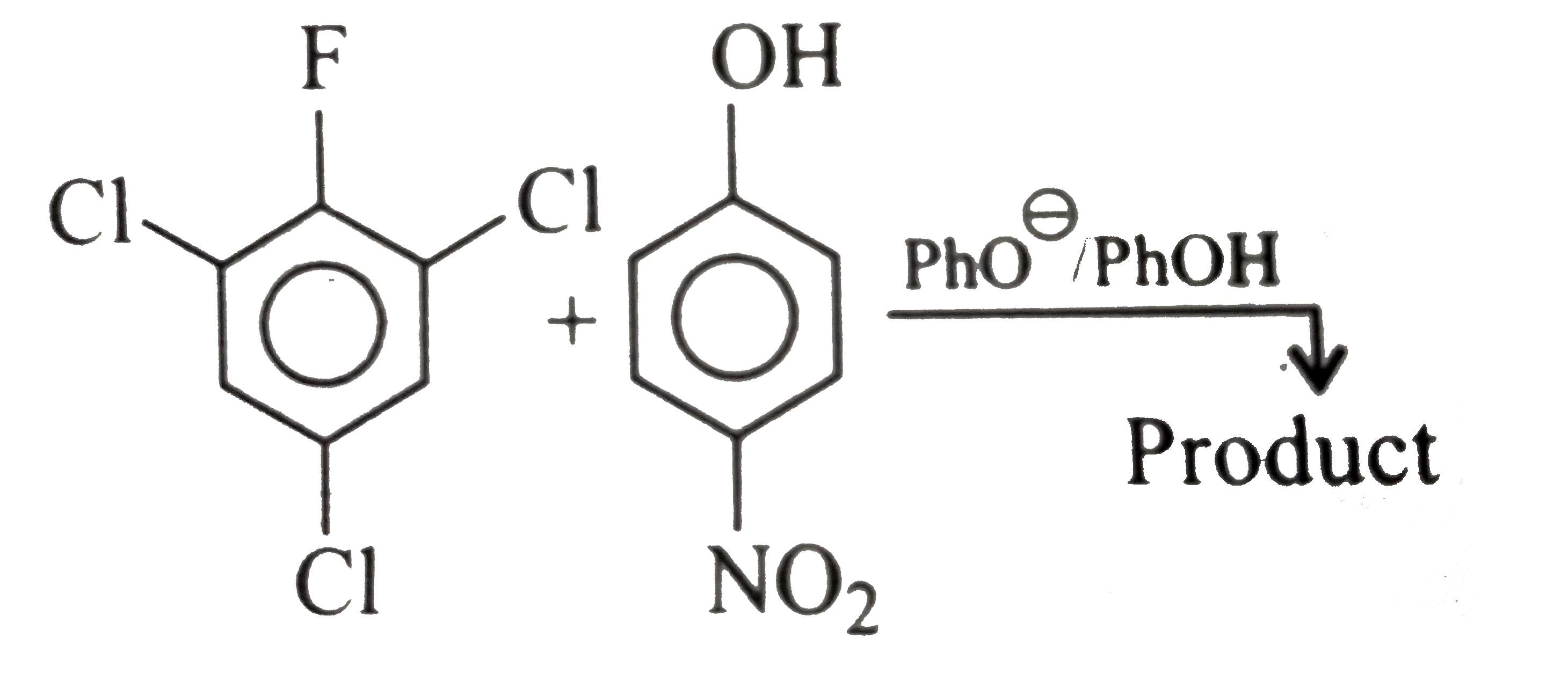Statement-I: Tert-Butoxide is a stronger base than OH− or C2H5O− ion but is a much poorer nucleophile
Because
Statement-II: A negatively charged ions is always more powerful nucleophile than its conjugate acid.
Statement-I is True, Statement-II is True : Statement-II is a correct explanation for Statement-I
Statement-I is True, Statement-II is True : Statement-II is NOT a correct explanation for Statement-I
Statement-I is True, Statement-II is False.
Statement-I is False, Statement-II is True.
The correct Answer is:B
To analyze the given statements, we will break down the reasoning behind each statement step by step.
Step 1: Understanding Statement-I
Statement-I: Tert-Butoxide is a stronger base than OH⁻ or C₂H₅O⁻ but is a much poorer nucleophile.
1. Structure of Tert-Butoxide: Tert-butoxide (t-BuO⁻) has the structure (CH₃)₃CO⁻. It has three methyl groups attached to the oxygen.
2. Basicity: The presence of three electron-donating methyl groups increases the electron density on the oxygen atom, making t-BuO⁻ a stronger base compared to OH⁻ (hydroxide) and C₂H₅O⁻ (ethoxide). The +I effect from the alkyl groups enhances its basicity.
3. Nucleophilicity: Despite being a strong base, t-BuO⁻ is a poor nucleophile. This is due to steric hindrance caused by the bulky tert-butyl group, which makes it difficult for the nucleophile to approach and attack electrophilic centers.
Step 2: Understanding Statement-II
Statement-II: A negatively charged ion is always a more powerful nucleophile than its conjugate acid.
1. Conjugate Acids and Bases: For any acid-base pair, the conjugate acid is formed by adding a proton (H⁺) to the base. For example, the conjugate acid of OH⁻ is H₂O, and the conjugate acid of C₂H₅O⁻ is C₂H₅OH.
2. Nucleophilicity Comparison: Negatively charged ions (like OH⁻ or C₂H₅O⁻) have a complete negative charge and are generally better nucleophiles than their corresponding neutral conjugate acids (like H₂O or C₂H₅OH). This is because the negative charge increases the electron density, making it more reactive towards electrophiles.
Conclusion
- Statement-I is True: Tert-butoxide is indeed a stronger base than hydroxide or ethoxide but is a poorer nucleophile due to steric hindrance.
- Statement-II is True: A negatively charged ion is generally a more powerful nucleophile than its conjugate acid because of the presence of a complete negative charge.
Final Answer
Both statements are true, but Statement-II does not explain Statement-I. Therefore, the answer is:
Option B: Statement I is true, Statement II is true, but Statement II is not the correct explanation for Statement I.
---
Statement-I: Tert-Butoxide is a stronger base than OH⁻ or C₂H₅O⁻ but is a much poorer nucleophile.
2. Basicity: The presence of three electron-donating methyl groups increases the electron density on the oxygen atom, making t-BuO⁻ a stronger base compared to OH⁻ (hydroxide) and C₂H₅O⁻ (ethoxide). The +I effect from the alkyl groups enhances its basicity.
3. Nucleophilicity: Despite being a strong base, t-BuO⁻ is a poor nucleophile. This is due to steric hindrance caused by the bulky tert-butyl group, which makes it difficult for the nucleophile to approach and attack electrophilic centers.
Statement-II: A negatively charged ion is always a more powerful nucleophile than its conjugate acid.
2. Nucleophilicity Comparison: Negatively charged ions (like OH⁻ or C₂H₅O⁻) have a complete negative charge and are generally better nucleophiles than their corresponding neutral conjugate acids (like H₂O or C₂H₅OH). This is because the negative charge increases the electron density, making it more reactive towards electrophiles.
- Statement-I is True: Tert-butoxide is indeed a stronger base than hydroxide or ethoxide but is a poorer nucleophile due to steric hindrance.
- Statement-II is True: A negatively charged ion is generally a more powerful nucleophile than its conjugate acid because of the presence of a complete negative charge.
Both statements are true, but Statement-II does not explain Statement-I. Therefore, the answer is:
Option B: Statement I is true, Statement II is true, but Statement II is not the correct explanation for Statement I.
Topper's Solved these Questions
- ALKENE, ALKANE & ALKYNE BOOK - ALLENCHAPTER - ALKENE, ALKANE & ALKYNE EXERCISE - EXERCISE-4(A)
10 Videos
- ALKENE, ALKANE & ALKYNE BOOK - ALLENCHAPTER - ALKENE, ALKANE & ALKYNE EXERCISE - EXERCISE-4(B)
10 Videos
- ALKENE, ALKANE & ALKYNE BOOK - ALLENCHAPTER - ALKENE, ALKANE & ALKYNE EXERCISE - EXERCISE-2
103 Videos
- AIIMS 2019BOOK - ALLENCHAPTER - AIIMS 2019EXERCISE - CHEMISTRY
40 Videos
- ALKYL AND ARYL HALIDEBOOK - ALLENCHAPTER - ALKYL AND ARYL HALIDEEXERCISE - EXERCISE-05 (B)
35 Videos
Similar Questions
Assertion (A):

The product is:
Reason (R ): p−NO2−C6H4O− is a stronger nucleophile than PhO−.
View SolutionCH3COO− ion is more stable than C2H5O− ion. Assign reason.
View SolutionStatement-I: Acyl halide are more reactive than acid substance amide towards nucleophilic substitution.
Because
Statement-II: X− are better leaving group than NH2.
View SolutionStatement-I:Primay benzylic halides are more reactive than primary alkyl halides towards SN1 reaction.
Because Statement-II: Reactivity depends upon the nature of the nucleophile and the solvent.
View SolutionStatement-I: Unlike the >C=O group of aldehydes and ketones, the C=O of R−O∣∣C−OH does not undergo nucleophilic addition reactions.
Because
Statement-II: Carboxylic acids exist as dimers due to intermolecular hydrogen bonding in aprotic medium.
View SolutionCH3COO− (acetate ion) is more stable than C2H5O− (ethoxide ion). Explain.
View SolutionStatement-I: R−C≡O+ is more stable than R−C+=O
Because
Statement-II: Resonance in carbonyl compound provides_E01_565_Q01.png)
View SolutionConsider the following statements :
Statement :1HBr is a stronger acid than HI because of hydrogen bonding.
Statement :2F− ion has higher hydration energy than Cl−
Statement :3O2 is more powerful oxidising agent than F2 becuase it contains three 'O'.
Statement :4 fluorine does not form polyhalides.
and arrange in the order of true / false.
View SolutionStatement-1- 1 Phenol is more acidic than water
Statement-2 Phenoxide ion is resonance stabilized.
View SolutionStatement-1: Oxygen is more electronegative than sulphur, yet H2S is acidic, while H2O is neutral.
Statement-2: H−S bond is weaker than O−H bond.
View Solution